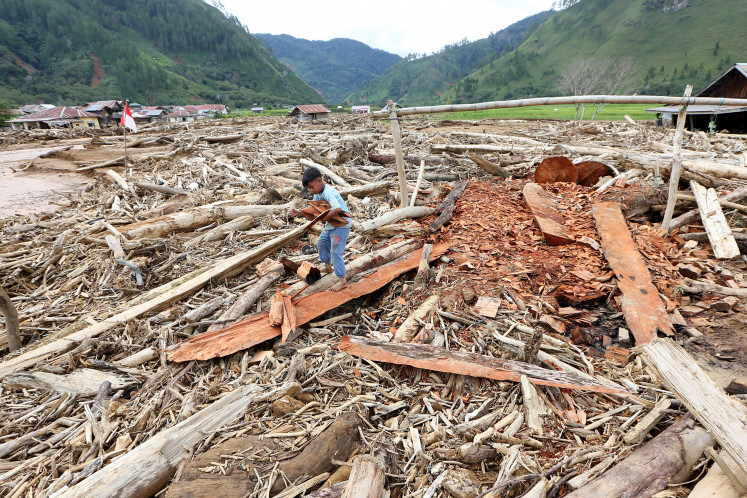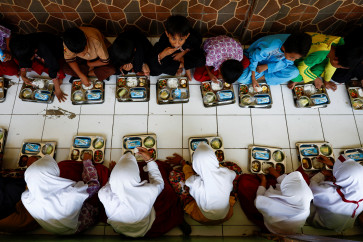Popular Reads
Top Results
Can't find what you're looking for?
View all search resultsPopular Reads
Top Results
Can't find what you're looking for?
View all search resultsThe free nutritious meal program: More than just a meal
Effective trade policy is important for achieving the free meals program’s local agriculture goals. Price volatility and global-to domestic price transmission are major concerns for commodities like milk and beef.
Change text size
Gift Premium Articles
to Anyone
A
mong President Prabowo Subianto’s campaign programs, the free nutritious meal program has garnered the most attention. Set to begin on Jan. 2, 2025, this program will not be the first of its kind.
According to the 2022 World Food Program (WFP) report, globally, around 41 percent of primary school students had access to free or subsidized meals daily. The program is linked to Indonesia’s effort to promote human resource development, which found mixed results in recent years. Stunting rates lowered from 31.4 percent in 2018 to 21.6 percent in 2022. Yet, Indonesia’s Human Development Index though considered “high” at 0.713, was ranked 112 out of 193 countries in 2022.
The 2022 Program for International Student Assessment (PISA) test showed lower student performance in mathematics, reading and science compared to 2018. What should the incoming administration consider when delivering the free meals program?
First, articulating the free meals program’s impact pathway is crucial. Stunting was said to be a key goal of the program, yet targeting children under age five might be more effective in combating stunting, rather than targeting schools. Roediger et al. highlight factors such as maternal education, vaccination and household food security as key determinants of reducing stunting. Expanding beneficiaries to pregnant women, breastfeeding mothers and toddlers sounds socially responsible, but risks diluting the program’s objective.
Second, while the free meals program’s multi-objectives — improving child nutrition, educational outcomes and supporting local agriculture — are commendable, their trade-offs should be recognized. For instance, ensuring nutritional food might require imports, conflicting with the local agricultural support goal, echoing the classic food security vs. self-sufficiency debate.
The 2019 Food and Agriculture Organization report on school meals in 33 low and middle-income countries found that while most programs focused on nutrition, only half also aimed to support agriculture. Further, the report’s mention of the “less conclusive” impacts of school meals on educational attainment underscores the need for additional strategies to achieve educational goals.
The free meals program may create “secured” markets for commodities like milk and beef, continuing Indonesia’s push for self-sufficiency and job creation. The 2022 WFP report noted that feeding 100,000 students generated 1,377 jobs. However, Indonesia remains a net importer of key commodities, with domestic milk production meeting less than one-fifth of consumption, and imports reaching 4 million tonnes in 2023. Additionally, domestic agriculture faces challenges like low productivity and supply chain issues. To succeed, resources should not be diverted from boosting local agricultural production.



















